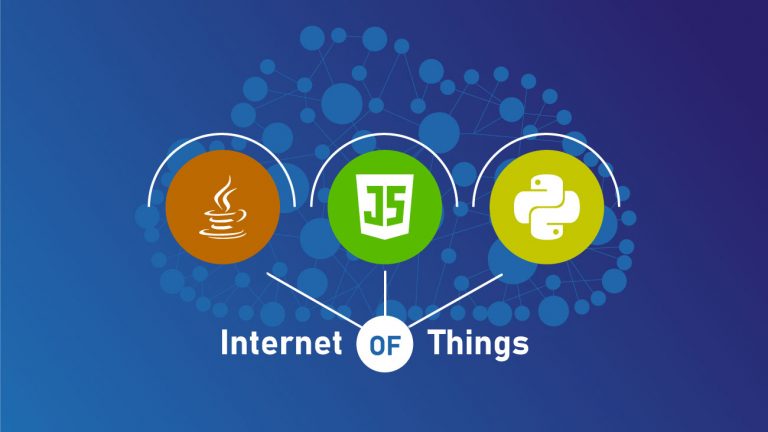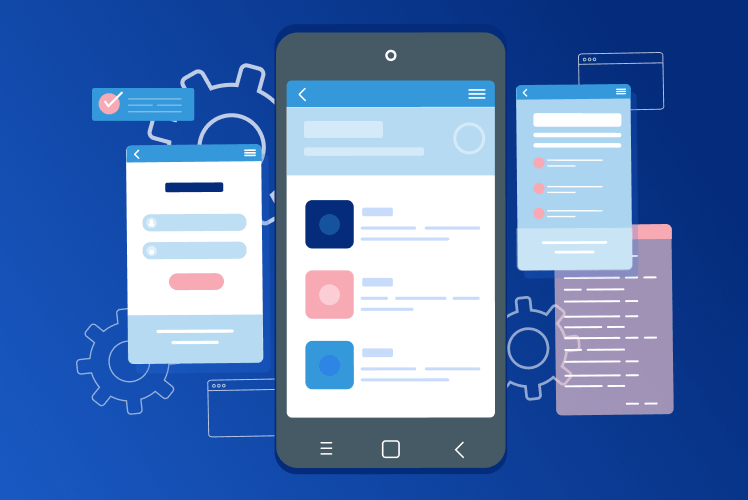Table of Contents
The Internet of Things is practically everywhere now. From smart homes to tiny devices collecting data on the water acidity, the use cases for IoT are close to endless.
As some developers say, IoT can be used to gain data about anything that can be measured. This opens a whole lot of opportunities for those entrepreneurs that wish to develop an innovative product that will bring tangible benefit to the users and will correspond to high requirements in terms of quality.

To achieve the desired result, one has to choose the right programming tools that will guarantee the high performance of the product. In the case of IoT, there are three areas to consider when choosing the development tools: data collection, data organization, and data processing. Each of these phases requires a different set of tools due to the nature of the processes involved.
In this article, we will focus on server-side IoT development. A cloud is a place where collected data is analyzed and processed so it’s critical you work with suitable programming languages.
The Top Three Programming Languages for Cloud IoT
In 2018, an IoT developer survey was conducted. The findings revealed that for each area of IoT development, there are certain languages that suit the best:
- Data collection (devices): C, C++, Python,
- Data organization (gateways): Java, Python, C,
- Data processing (server/cloud): Java, JavaScript, Python.
Based on the finding, the most suitable languages for server-side IoT programming will be Java, JavaScript, and Python.
Though each of them is different and has own pros and cons, there are some common features that make these languages so suitable for server-side IoT development:
- The stable response over specified time constraints,
- Efficient management of a high number of requests,
- Availability of modules with advanced repositories designed to work with IoT projects,
- Ready-made solutions with predefined IoT software set.
- Great support and a big community.
Now let’s have a look at each of the three languages in detail and see what makes them so good for server-side IoT development.
Java
While it may sound quite surprising, Java is actually excellent for the IoT development due to its nature and functionality.
Platform independence
Everyone knows that Java is “write once, run anywhere” programming language. And for IoT, that’s an immense advantage. Imagine how many different devices and platforms are involved in a single IoT operation. Now, it would be much easier to work with a versatile language that allows you to take the code to any platform with the help of the Java Virtual Machine and makes the transition between the platforms smooth and hassle-free.
Interoperability
IoT involves a dozen technologies: cloud computing, different hardware, sensors, etc. It is therefore crucial that a programming language can bring them all together. Java is known for high interoperability and this makes it perfect for most of the IoT solutions. Java helps devices communicate in a more efficient manner and contributes to their better integration.
Object-oriented
Java has an impressive built-in library of APIs that let it call from a generic code and create embedded applications, which is another benefit for the IoT development. One more thing about the Java native features is its ability to upgrade itself. This contributes to a longer life cycle of the IoT product and saves the developers’ time significantly.
JavaScript
JavaScript is a language of choice for work with HTML and Internet browsers but recently it claimed its right to become included in the list of top languages for IoT development.
Node.js and its IoT-friendly features
Node.js is a JavaScript server environment that seems like a perfect match for IoT-related projects. As mentioned above, any IoT project involves many processes and a variety of devices, each generating high data volumes. Node.js is capable of handling a large number of requests efficiently. Node.js also has built-in NPM package manager that has quite a number of IoT modules for robust app development. Finally, many IoT applications use MQTT protocol and standard Sockets and Node.js seamlessly supports them.Node.js is scalable, reliable, and fast, and allows real-time execution. Altogether, this makes Node.js a perfect choice for IoT projects.
Available tools and features
First, Java is packed with awesome tools and libraries: Underscore.js, Async, server-side APIs, testing tools (FireUnit, SugarTest), etc. Such an array of tools significantly expands the possible areas of language application and grants developers more flexibility and freedom in the development process.
Second, JavaScript has a few frameworks that are perfectly suited for IoT development: CyclonJS, JerryScript, IoT.js.
Support by IoT hardware
There are a few IoT hardware solutions like Raspberry Pi that are used by thousands of IoT developers on a regular basis. For better development, it is desirable that your programming language of choice is supported by this hardware. In case of JavaScript, most IoT hardware solutions support Node.js which is another major reason to work with this language on your IoT projects.
Python
Last but not least – Python.
This programming language is probably the most well-known language for IoT development. It is easy to learn, has a growing community, and has a wide array of tools that can be applied for different IoT-related tasks.
An advanced set of tools
Python is equipped with a set of tools and libraries that are designed specifically to solve IoT-related issues:
- TensorFlow for Machine Learning,
- Matplotlib for data visualization,
- NumPy and SciPy for scientific computing,
- OpenCV for computer vision.
Combined with intuitive and clear code, Python is an easy yet powerful language to tackle the most challenging IoT tasks.
Suitable for microcontrollers
As we said in the beginning, the IoT processes start with data collection which happens on small devices. In order for these devices to communicate with the app and transfer the data, they need microcontrollers.
Now, Python is suitable to operate on such microcontrollers. A MicroPython board is a small circuit board that runs MicroPython on bare metal and turns out as a great solution for microcontrollers.
Core features
The native features of the Python language are already suitable for work with IoT projects. Python is very clear and intuitive and provides a code that is simple for understanding. As well, the code is portable, meaning, one code can run on different machines. As well, Python can be integrated with other languages: for example, Python code can be inserted in the C++ code. Altogether, that makes Python a convenient language to work with.
A side note on other IoT-friendly languages
In addition to the abovementioned languages, there are a few other programming languages to consider when drafting an IoT project.
C is the language of choice for microcontroller development because it is suitable for writing low-level code. However, there is a risk of a syntax becoming bulky so C developers must know the best coding practices to avoid that.
PHP is also slowly finding its way into the IoT development, alongside with Swift. However, Java, Python and C are leading the way and grant developers immense flexibility and plenty of options to work with.



Comments